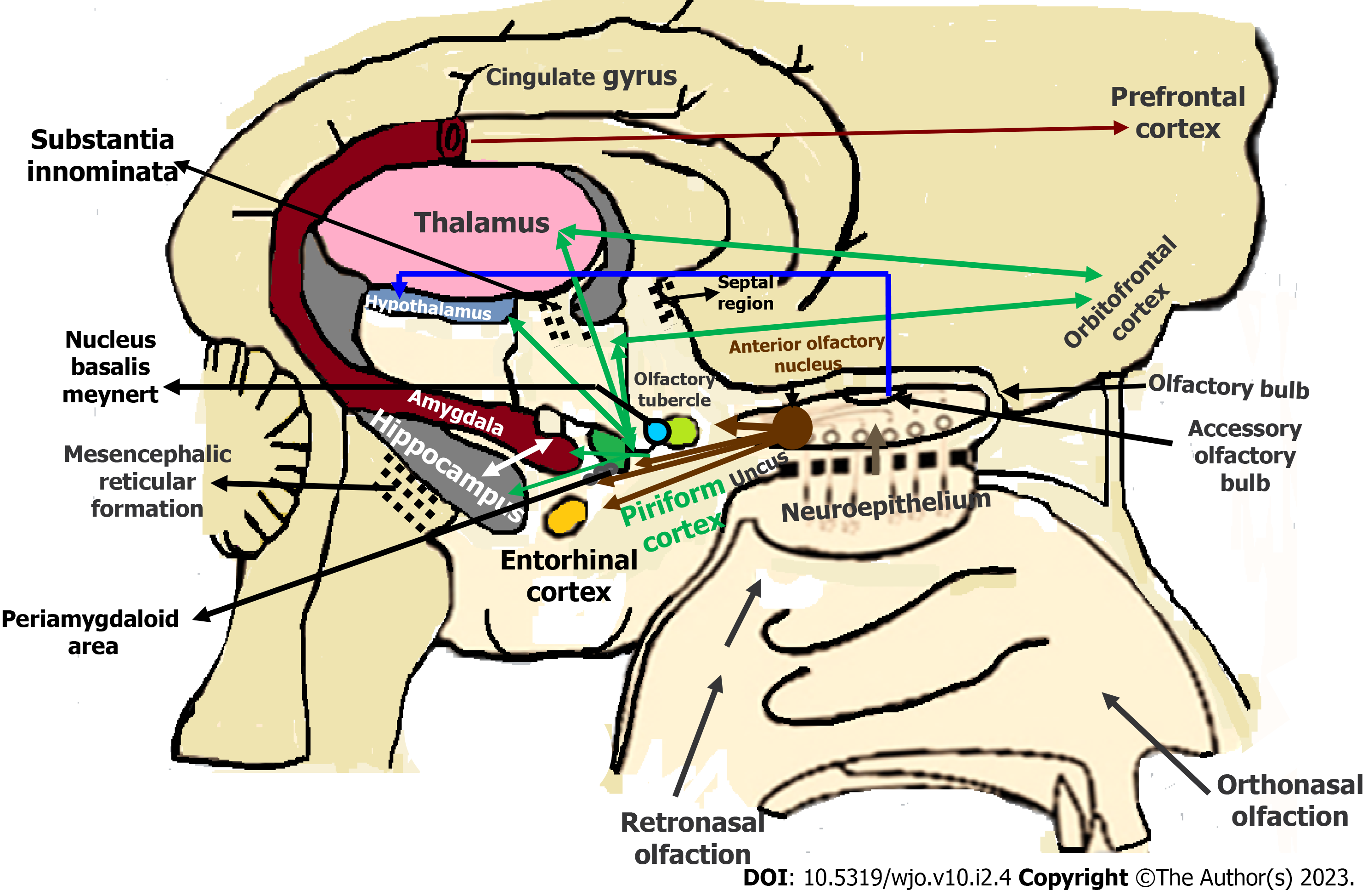Copyright
©The Author(s) 2023.
World J Otorhinolaryngol. May 9, 2023; 10(2): 4-22
Published online May 9, 2023. doi: 10.5319/wjo.v10.i2.4
Published online May 9, 2023. doi: 10.5319/wjo.v10.i2.4
Figure 1 Olfactory perception and its pathways.
There are two routes for odor perception: The orthonasal and retronasal routes. The process of olfaction converts chemical information from odorants into electrical potentials extending from the olfactory epithelium to the bulb and then the brain. Brain areas for perception of olfaction sensation are divided into the primary and the secondary cortical olfactory areas. The primary areas include the uncus, anterior olfactory nucleus, olfactory tubercle, piriform cortex, lateral entorhinal cortex, and the cortical nucleus of the amygdala. The secondary areas include the hypothalamus, mediodorsal thalamic nucleus, nucleus basalis Meynert, hippocampus, the septal region, substantia innominata, mesencephalic reticular formation, and the orbitofrontal cortex.
- Citation: Hamed SA. Post-COVID-19 persistent olfactory, gustatory, and trigeminal chemosensory disorders: Definitions, mechanisms, and potential treatments. World J Otorhinolaryngol 2023; 10(2): 4-22
- URL: https://www.wjgnet.com/2218-6247/full/v10/i2/4.htm
- DOI: https://dx.doi.org/10.5319/wjo.v10.i2.4









